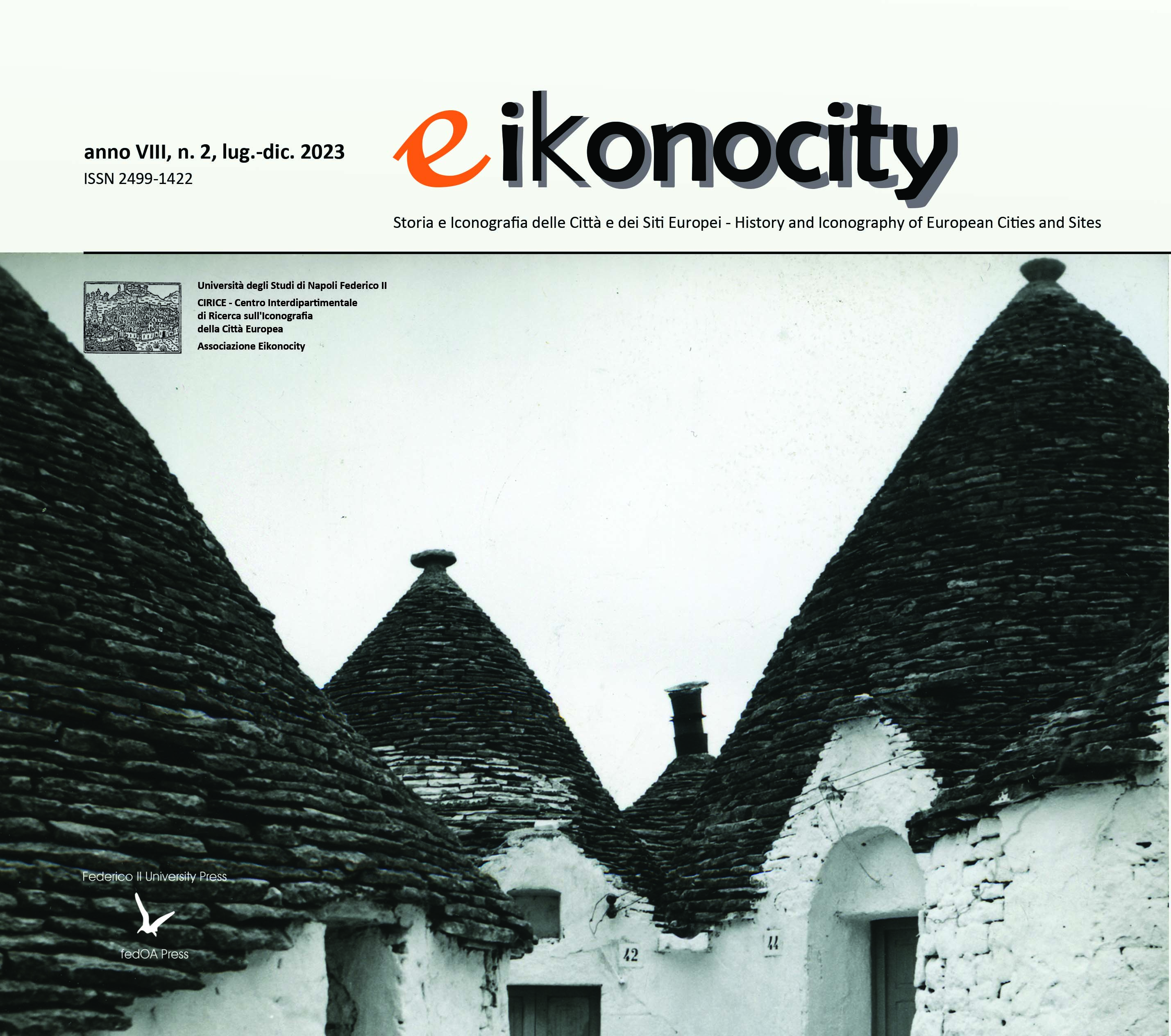Building traditions in the Murgia of the trulli in the architects’ photographic imagineering (1913-1969)
DOI:
https://doi.org/10.6093/2499-1422/10241Abstract
The power of the photographic document, the grandeur and complexity of visual documentary of Apulian campaigns have almost always the clear intention of persuading, encouraging and stimulating interests not only in anthropology of the region but also in regards to its traditional construction techniques. In many primitive cultures building are anonymous in the sense that the name of the architect, owner or builder in not recorded and nothing precise is known about the circumstances of their construction. Such buildings have to be considered as the products of a community rather than of any individual, a description which exactly characterizes the countless number of rural homes in Puglia particularly in the region where the unique conical-roofed trulli are found. The kind of construction is closely linked to peasant life, to the survival of local people, to their life style and standards of living: “the satisfaction of the simplest and least vain man-made construction needs, with a spirit of marvelous primitivism”. It was perhaps the brief and challenging article ‘Documenting Rural Architecture’ by Giuseppe Pagano, Casabella, November 1935, which inspired Bernard Rudofsky to visit Pulia, as had already happened with Emil Otto Hoppé, and later with architects such as Enrico Peressutti, Edorado Gellner, Giancarlo De Carlo, and Edward Allen. All of these with the aid of a camera had one primary purpose: to gain a personal understanding of a vernacular building drawn from the geographical circumstances of the Murgia dei trulli.
Downloads
Downloads
Published
How to Cite
Issue
Section
License
Eikonocity pubblica in internet, ad accesso aperto, con licenza:
|
|
CCPL Creative Commons Attribuzione 4.0 |
L'autore conserva il copyright sul suo contributo, consentendo tuttavia a chiunque "di riprodurre, distribuire, comunicare al pubblico, esporre in pubblico, rappresentare, eseguire e recitare l'opera", purché siano correttamente citati l'autore e il titolo della rivista. L’autore, al momento della proposta di pubblicazione, è inoltre tenuto a dichiarare che il contenuto e l’organizzazione dell’opera è originale e non compromette in alcun modo i diritti di terzi, né gli obblighi connessi alla salvaguardia di diritti morali ed economici di altri autori o di altri aventi diritto, sia per testi, immagini, foto, tabelle, sia per altre parti di cui il contributo può essere composto. L’autore dichiara altresì di essere a conoscenza delle sanzioni previste dal codice penale e dalle leggi speciali per l’ipotesi di falsità in atti ed uso di atti falsi, e che pertanto Eikonocity è esente da qualsiasi responsabilità di qualsivoglia natura, civile, amministrativa o penale, e sarà dall'autore tenuta indenne da qualsiasi richiesta o rivendicazione da parte di terzi.


